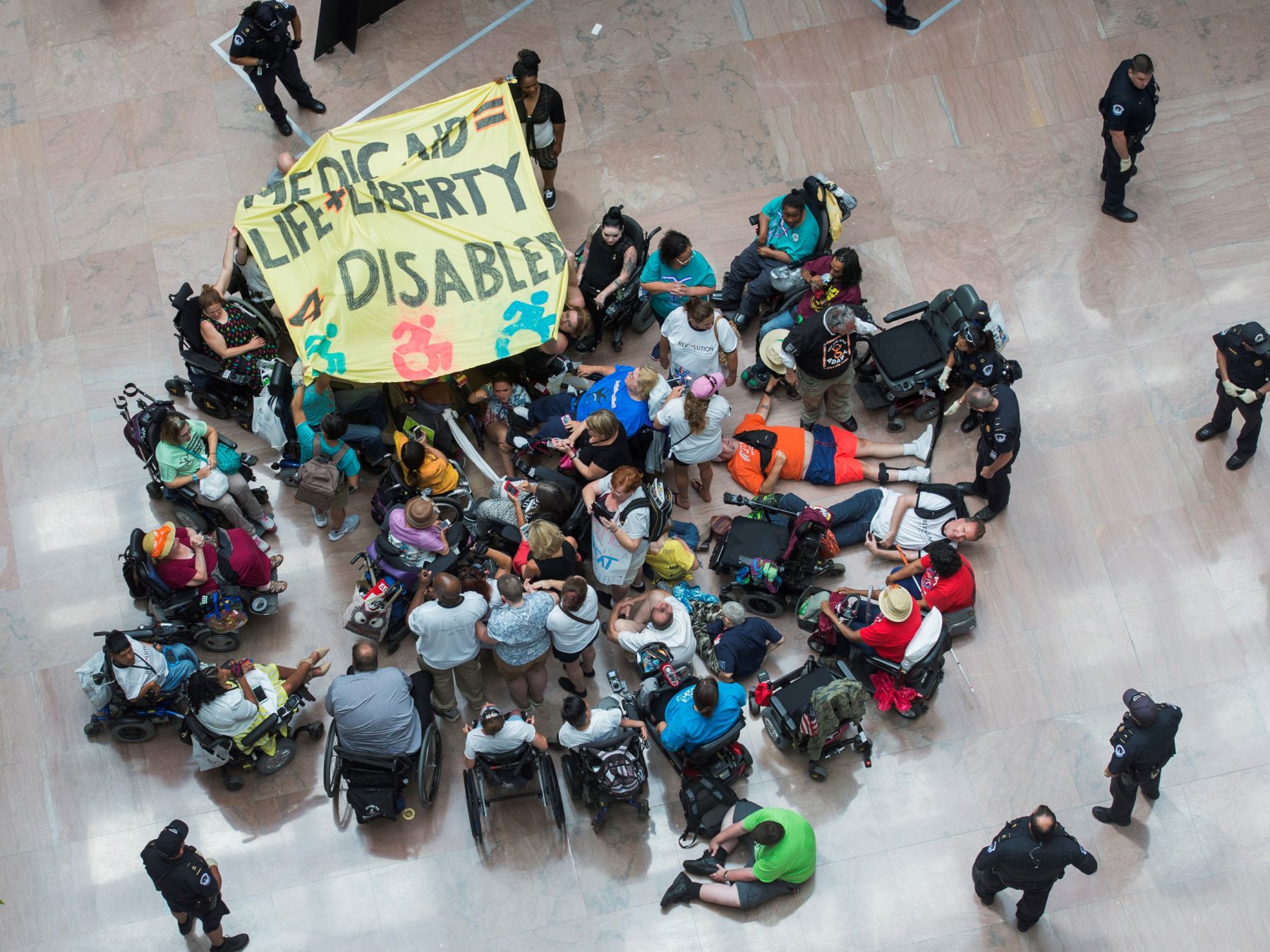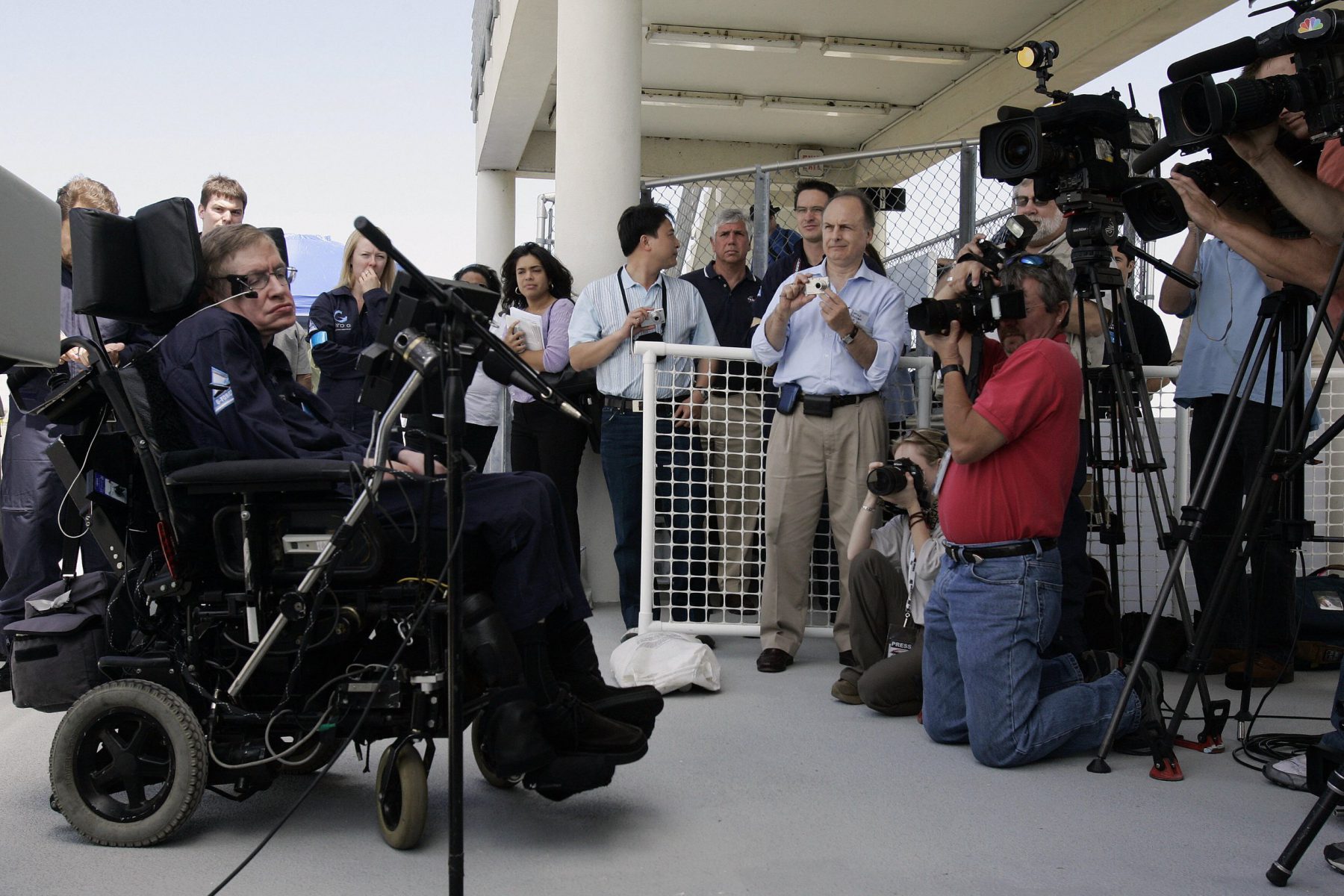
When renowned astrophysicist Stephen Hawking died in 2018, nearly every media outlet in the country jumped in to praise his contributions to science. Much to the surprise of many journalists, who thought they were giving a great scientist his due, the coverage produced an uproar.
Over and over, Hawking’s accomplishments were held up as remarkable not because they were remarkable but because he lived with amyotrophic lateral sclerosis (ALS), used a wheelchair and communicated through a computerized voice system.
The Washington Post, for example, described Hawking as someone “who overcame a devastating neurological disease to probe the greatest mysteries of the cosmos.” As if his disabilities somehow went away — or that his disabilities could not have aided him in his work (as Hawking once said they did).
“Despite his physical ailments,” read the USA Today obituary, “he was known for a direct and dry wit.” As if it’s notable that a disabled individual could actually be witty.

More than three years later, it’s worth asking: If Hawking died today, would the coverage be different? What do we still need to learn about how to cover people with disabilities in a way that recognizes their humanity and achieves the journalistic goals of accuracy and inclusion?
The National Center on Disability and Journalism at Arizona State University works with journalists around the world to help answer that last important question. We begin with the premise that journalists want to get it right and that for many of them, the ground seems to be constantly shifting. Some words and terms long used to describe disability now produce offense. Articles intended to make people feel good are often attacked as “inspiration porn.” Journalists get tripped up in medical diagnoses, are uncertain about who to talk to and worry about what they don’t know. They’re pretty certain they’re going to offend someone no matter what they do.
All of this could – and sometimes does – lead to a reluctance to cover disability at all. But consider: One in four Americans lives with some kind of disability – a larger number than any single ethnic group. Magnify that by hundreds of thousands of friends, family members, caregivers and others who are connected to those with disabilities, and you have not just a slew of untold stories but a sizeable audience for those stories.
These are good reasons to risk the minefield of disability reporting, but there is another: People with disabilities have been sidelined and silenced for far too long. If there is a group worthy of the journalistic imperative to give voice to the voiceless, this is one.
Here is some advice on how to begin:
Include people with disabilities in all kinds of coverage
When people with disabilities are included in stories it is often because of their disabilities and not because they have something to say about politics or education, sports or gardening or any of the other interests and activities that make up their lives. People with disabilities are affected by the climate crisis, get married, fall in love and raise kids just like other people do. Their perspectives are worth including.
Add the voices of those with disabilities
A surprising number of disability-related stories quote doctors, caregivers and family members but leave out those who live with disabilities. This reduces disabled people to examples rather than people who have the power to speak for themselves. And don’t assume that people with developmental disabilities or who are nonverbal can’t communicate. They often can.
Avoid “hero” and “victim” stereotypes
Stories about people with disabilities frequently portray them as victims or heroes – as vulnerable individuals to be pitied or as inspirational caricatures who have somehow managed to achieve the kinds of things expected of others, but not of them. It’s important to preserve subjects’ humanity, showing them as complete characters, not just a disability.
Mention the disability only when it’s relevant
Sometimes a person’s disability is mentioned in a story even when the story has nothing to do with disability. The tricky part is determining what is relevant. Should a story about residents complaining about noisy airplanes flying over their houses note that one of the residents complaining uses a wheelchair? Should someone who is blind be identified as such in a story about people who have been stranded while hiking and had to be rescued? In the first case, we suggest the answer is “no.” The fact that someone uses a wheelchair does not make the airplane noise any more or less irritating. In the second case, the answer is “maybe.” If the hiker’s blindness contributed to him or her getting stranded, making note of that fact is relevant.
Strive for the right words
Should you use the word “disorder” when referring to a disability? What about “special,” “impairment” or “abnormality”? Often there is disagreement about language choices, even within the disability community, and what is considered appropriate can change quickly. The NCDJ disability language style guide can help you decide the best words or terms to use.
Avoid euphemisms
There are almost as many euphemisms associated with intellectual or developmental disabilities as there are types of these disabilities. Some of the most common to avoid are “crazy,” “insane,” “slow,” “special,” “psychotic” and “disorder.” Try to obtain the actual medical diagnosis. “Mental illness,” for example, is an umbrella term for many different conditions. Again, the NCDJ style guide can help.
Ask sources how they want to be described
People with autism may want to be described that way, or they may want to be described as autistic. Some may object to being called disabled; others embrace it. When possible, ask sources how they would like to be described. They are the experts.
What about quotes?
Sources don’t always speak the way we write. That’s OK. You may end up using a term in a direct quote that some find objectionable; just be certain that it’s fundamental to the story. Otherwise, paraphrase and use a more acceptable term.
Writing about disability is complicated and requires sensitivity. But don’t let that stop you. Ignoring this important segment of the population is worse than an occasional misstep. Do your best.



